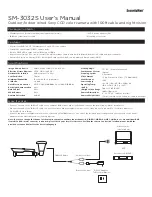34
Description and Working Principle
iina
74
e 0
4
.f
m
te
chn
ica
l ha
nd
boo
k
(1
40
8)
Gas molecules getting into the mass spectrometer are ionized by the ion source.
These positively charged particles are accelerated into the magnetic field following a
circular path, the radius of which depends on the mass-to-charge ratio of the ions.
Only helium ions can pass this filter and reach the ion collector where the stream of
the ions is measured as a electrical current.
For operation the mass spectrometer requires a vacuum level in the range of
1×10
-4
mbar and lower. This pressure is provided by the turbomolecular pump which
in turn is backed up by a scroll pump.
Besides maintaining the pressure in the mass spectrometer the pump system is used
to evacuate the test parts. It is made sure that the pressure in the mass spectrometer
is low enough under all circumstances. The valves V1a, V1b, V2, V4a, V4b control
the gas flows when measuring. Valves V5, and V8 are used to vent the system and
the Turbo pump. Valve V7 opens and closes the internal test leak during calibration.
With the pressure in the test part being lower than ambient pressure sprayed helium
can penetrate into the part in case of a leakage. As soon as the pressure conditions
allow it one of the valves to the TMP opens. Now Helium can penetrate into the mass
spectrometer contrary to the pumping direction of the TMP.
See Chapter
for details.


















